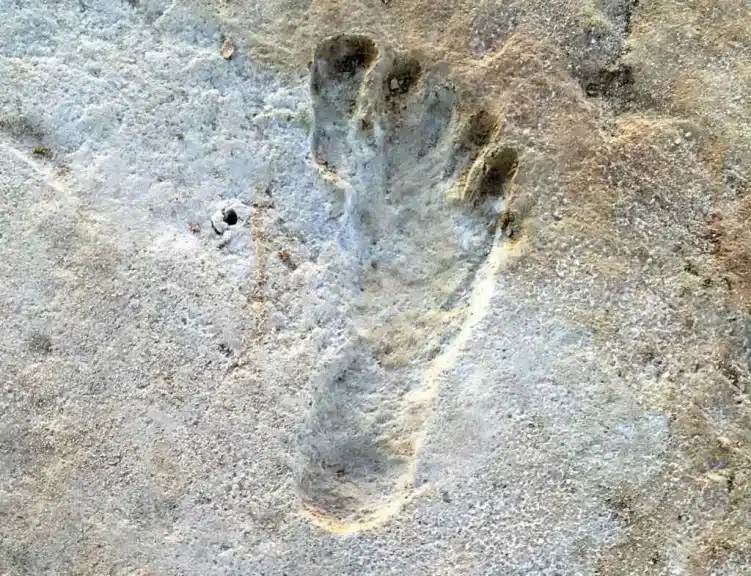Deep in the heart of White Sands National Park, New Mexico, amidst the imprints of colossal mammoths and majestic ground sloths, a stunning revelation emerges like a bolt from the blue: human footprints!
Dated back in 2021 to a mind-boggling timeframe, some 20,000 to 23,000 years ago, these ancient footfalls have thrown the archaeological world for a loop. For decades, the scholarly consensus held that humans strolled onto the American continent around 14,000 years ago. But this discovery, along with a slew of fresh evidence, flips the script on that narrative.
Kathleen Springer, a scientist sporting the colors of the US Geological Survey, spilled the beans to The Washington Post, declaring this revelation a seismic event that’s making archaeologists question their very existence.
Now, I know what you’re thinking, and you’re not alone. Skepticism lingers like a shadow, both about the footprints‘ age and the dating method. But those brave souls who dared to tread on this uncharted territory went back to the drawing board, conducting more tests to put those doubts to rest.
Enter the saga of the White Sands footprints. In the 2021 scientific paper, researchers from the National Parks Service and the US Geological Survey, along with other brainy institutions, tried to crack the case. They played matchmaker with seeds from an aquatic ditchgrass, cunningly tucked away between sediment layers housing these enigmatic footprints.
They deployed the classic radiocarbon dating, a method that measures the remnants of carbon in a deceased critter and winks at its decay rate. But critics, always lurking in the shadows, whispered that those seeds might have been mingling with older carbon, far away from today’s atmosphere.
You see, aquatic plants have a knack for guzzling carbon from deep groundwater, carbon that hasn’t seen the light of day for eons. Radiocarbon dating, in such cases, could make them seem older than your grandpa’s bedtime stories. Or maybe, just maybe, these seeds hitchhiked their way into the footprints from some other time capsule, hidden away for thousands of years.
Fast forward to the present, and a paper fresh off the press in the prestigious journal Science. Kathleen Springer, alongside Jeff Pigati and their posse, aimed to silence the skeptics once and for all. They pulled out all the stops, radiocarbon dating pollen grains from conifer plants, and even went sci-fi with optically stimulated luminescence (OSL) to date the sediment.
With OSL, they examined grains like quartz to see when they last soaked up the sun’s rays. And lo and behold, both these fancy-schmancy techniques matched the original age estimates. It’s a symphony of data, singing in unison that humans were doing their thing in the Americas roughly 20,000 years ago.
But hold onto your fedora, because not everyone’s buying it. Loren Davis, a seasoned anthropology professor at Oregon State University, is a tough nut to crack. He’s holding out for more evidence, demanding more cards on the table before he plays his hand.
So there you have it, folks, a tale of ancient footprints and the debate that refuses to quit. It’s like a gripping thriller, and we’ll just have to wait and see if science can unveil more secrets from the sands of time.






